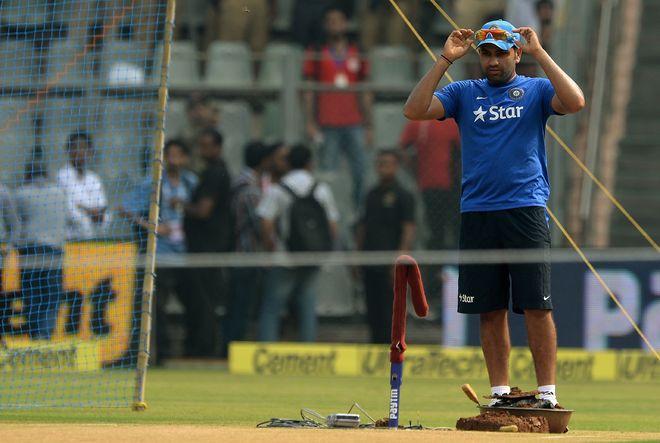Turf wars: All nations queer the pitch
Rohit Mahajan
Tribune News Service
Chandigarh, October 28
Indian team director Ravi Shastri’s tirade against Sudhir Naik, the pitch curator at Mumbai’s Wankhede Stadium, was ill-advised for two reasons. One, the match and series had already been lost and nothing could have been gained from a public spat with Naik; two, the episode cast the Indian team management in a very bad light – it became clear that the team tries to directly influence the quality and nature of the wickets in India.
Critics have blamed Shastri and the Indian team for trying to get the pitches doctored to suit their players. But it’s not a phenomenon that’s exclusive to Indian cricket — the world over, pitches are created to suit the home players.
But in countries such as England and Australia, the authorities are extremely discreet in the manner they make pitches helpful to the home team. In India, due to the indiscretion of the coach/captain, or the obstinacy and outspokenness of curators, this issue becomes a matter of public debate. This debate often descends into acrimony.
Doctoring in England
When Australia toured England earlier this summer, the wickets were designed to neutralise the Australian pace. The Australian attack included Mitchell Starc, Mitchell Johnson and Josh Hazlewood, a potentially destructive combine on helpful pitches. The three did take 49 wickets in the five Tests, but they came at a high cost of 30.30 per wicket. The Australian pace attack had been rendered less penetrative due to the wickets, which were generally slow and devoid of grass. It was reported in the British media that the England and Wales Cricket Board (ECB) had advised the host associations to provide slower pitches.
England secured the Ashes after taking a 3-1 lead. Later James Anderson, the England fast bowler, said that they should influence the nature of the pitches in the future too.
“I think there’s certainly an element where we should’ve done it more in the past (and) we should it do it more in the future,” Anderson said. “When we go to Australia, they prepare the pitches to suit their team. When we go to India, the same thing happens.”
“Even if we did (doctor pitches), everyone else in the whole world prepares pitches to give them home advantage and I don’t see why it should be any different here,” he said. “We should prepare pitches that suit us.”
Everyone does it
Indian players have played on greentops outside India in the past. Sunil Gavaskar has written in Sunny Days that sometimes in England, the pitch would be so green that it would completely blend in with the outfield.
Similarly, Indian wickets have often been dusty turners — for instance, against Australia at Mumbai in 2004, and against South Africa at Kanpur in 2008. The difference is that in England or Australia, there’s a unanimity of opinion and purpose among the curators and players/officials. If they debate or disagree over doctoring pitches, they do it away from the public eye.
In India, these issues become controversial due to the verbal clashes between the curators and coaches/players.
For instance, three years ago, Kolkata curator Prabir Mukherjee called Dhoni “immoral and unethical” for asking for a turner!
In the past too, Indian curators have often refused to oblige Indian captains with the wickets they wanted — Anil Kumble at Ahmedabad in 2008, for instance, or Sourav Ganguly at Nagpur in 2004.
The public war of words in India eads to the belief that the Indian team management gets the wickets tailored to suit its needs — the fact is that everyone does it.
Unlock Exclusive Insights with The Tribune Premium
Take your experience further with Premium access.
Thought-provoking Opinions, Expert Analysis, In-depth Insights and other Member Only Benefits
Already a Member? Sign In Now










